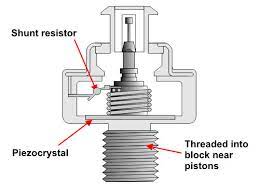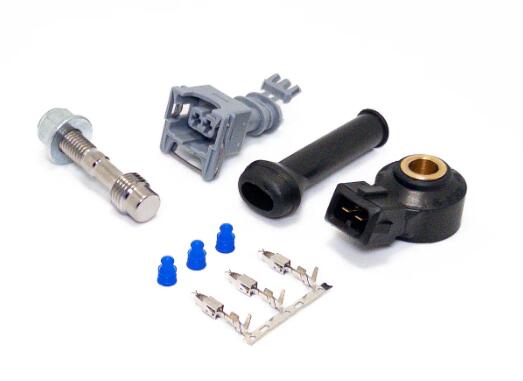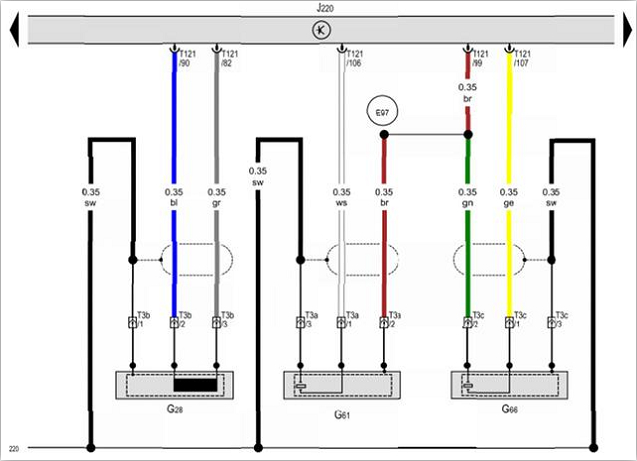"Knock" in the context of internal combustion engines refers to an undesired and potentially damaging phenomenon that occurs when the air-fuel mixture in the engine's cylinders ignites prematurely or unevenly. This premature ignition causes a sharp, knocking or pinging noise, from which the phenomenon derives its name. Knock can lead to engine damage, reduced performance, and increased emissions if not properly managed. Understanding knock involves exploring its causes, effects, and ways to prevent it.
Causes of Engine Knock
- High Compression Ratios: Engines with high compression ratios can cause the air-fuel mixture to heat up excessively, leading to spontaneous ignition before the spark plug fires.
- Low Octane Fuel: Low octane fuels are more susceptible to knocking because they ignite more easily under pressure. Using fuel with an octane rating lower than what the engine is designed to handle can cause knock.
- Engine Temperature: High engine temperatures can increase the cylinder temperatures, contributing to the risk of knock.
- Advanced Ignition Timing: If the spark plug fires too early in the compression stroke, it can cause the air-fuel mixture to ignite prematurely.
- Carbon Deposits: Accumulation of carbon deposits in the combustion chamber can increase compression and retain heat, both of which can lead to knock.
- Lean Air-Fuel Mixture: A mixture with too much air and not enough fuel can burn more slowly and unevenly, increasing the likelihood of knock.
Effects of Engine Knock
- Performance Loss: Knocking can decrease power output and fuel efficiency because it disrupts the smooth expansion of gasses within the cylinder.
- Engine Damage: Prolonged knocking can lead to significant engine damage, including piston wear, broken or cracked spark plugs, and damage to the cylinder walls and head gasket.
- Increased Emissions: Knock can lead to incomplete combustion, resulting in higher emissions of unburned hydrocarbons and other pollutants.
Prevention and Management of Engine Knock
- Octane Rating: Using fuel with a higher octane rating can prevent knock since such fuels are more resistant to ignition under pressure.
- Engine Tuning: Adjusting the ignition timing and air-fuel mixture can help avoid conditions that lead to knock. Modern engines often feature knock sensors that automatically adjust the ignition timing to prevent knock.
- Engine Cooling: Keeping the engine and its coolant at appropriate temperatures can reduce the risk of knock by preventing excessive cylinder temperatures.
- Regular Maintenance: Regular engine maintenance, including cleaning or replacing spark plugs and removing carbon deposits, can help avoid knock.
Knock is a critical factor in engine design and operation. Engineers use various strategies, including direct injection, turbocharging, and the use of advanced materials and coatings, to increase engine efficiency and power while preventing knock. Additionally, the automotive industry's shift towards electric vehicles (EVs) and hybrid technologies reflects broader efforts to improve energy efficiency and reduce reliance on internal combustion engines, thus circumventing issues like knock.
What is a Knock Sensor?

A knock sensor is an electronic device fitted to an internal combustion engine to detect knock or pinging, which is the term used for the noise made by uncontrolled and early ignition of the fuel-air mixture in the cylinder combustion chamber. The primary function of a knock sensor is to allow the engine's control unit to regulate the ignition timing to prevent knock as much as possible.
Here's how a knock sensor generally works:
-
Detection: The knock sensor detects vibrations characteristic of knock. It is usually a piezoelectric sensor that generates a voltage when it experiences a vibration. The vibrations from engine knock create a specific resonance pattern that the sensor can detect.
-
Signal Processing: When the sensor detects vibrations that are outside the normal range of engine operation (which could indicate knock), it converts these vibrations into an electrical signal.
-
Control Unit Notification: The electrical signal is sent to the engine control unit (ECU), where it is processed. The ECU is programmed to recognize the frequency pattern that is typical of knock.
-
Adjustment: In response to the knock sensor's signal, the ECU can adjust the engine's timing by delaying the spark timing. Retarding the ignition timing reduces the cylinder pressure and temperature at the time the air-fuel mixture is ignited, thereby preventing or reducing knock.
Key points about knock sensors:
-
Location: Knock sensors are typically bolted to the engine block or cylinder head. This placement allows them to detect the vibrations in the engine structure caused by knock effectively.
-
Importance: Using knock sensors allows the engine to operate at optimum timing until knock is detected, providing a balance between efficiency, power, and protection.
-
Adaptation: Modern knock sensor systems can adapt to different fuel octane ratings by adjusting engine timing in real-time, allowing for safe operation even if lower-octane fuel is used inadvertently.
-
Self-Protection: The sensor helps to protect the engine from the potentially damaging effects of knock, thereby prolonging the engine's life and maintaining its performance.
If a knock sensor is not functioning correctly, an engine might suffer from decreased performance and efficiency, potentially leading to engine damage over time. Modern cars will often throw a check engine light (CEL) and store a diagnostic trouble code (DTC) in the ECU's memory if there is an issue with the knock sensor or its circuit, alerting the driver to the need for service.
Where is the Knock Sensor?
The knock sensor is typically located on the engine block or cylinder head. Its exact position can vary depending on the engine design and manufacturer. The knock sensor needs to be in a place where it can accurately detect the vibrations caused by engine knock. Here are some general guidelines for where you might find the knock sensor:
-
Engine Block: Many engines have the knock sensor mounted directly on the engine block. On V-configured engines, there might be a sensor on each bank of cylinders.
-
Cylinder Head: Some engines might have the sensor located on the cylinder head.
-
Under the Intake Manifold: In some engine designs, particularly V6 or V8 engines, the knock sensor might be located under the intake manifold, requiring the removal of the manifold for access.
-
Near the Water Jacket: To sense the engine's vibrations accurately, it can be positioned near the water jacket to capture the sound of knock before it's dampened by other engine components.
-
Accessible via Undercarriage: For certain cars, access to the knock sensor might be easier from under the vehicle rather than from above, due to space constraints or the layout of the engine bay.
It's important to refer to the specific vehicle's service or repair manual for the knock sensor location because there can be wide variation among different engine types and car models. If you're not familiar with working on cars, it’s advisable to have a qualified mechanic perform any diagnostics or replacements of the knock sensor. If you're attempting to locate or replace the sensor yourself, make sure the engine is off and completely cooled down to avoid burns or other injuries.
How does the Knock Sensor Work?

The knock sensor works by detecting the specific vibrations or acoustic frequencies associated with engine knock, a condition also known as detonation, pre-ignition, or pinging. This undesirable scenario happens when the air-fuel mixture in an engine cylinder ignites prematurely, creating a sudden spike in cylinder pressure. Not only does this reduce engine efficiency and performance, but it can also cause significant engine damage over time. Here’s a detailed look at how the knock sensor detects these conditions and communicates with the engine's control systems to mitigate the potential harm:
The Principle of Operation
-
Vibration Detection: At its core, the knock sensor is a type of microphone that is tuned to detect the frequency range typical of engine knock. Most knock sensors use a piezoelectric element that generates an electric signal when it is vibrated or stressed. This element is sensitive to the specific range of vibrations produced by knocking.
-
Signal Conversion: When the piezoelectric element inside the knock sensor detects vibrations corresponding to knock frequencies, it converts these physical vibrations into an electrical signal. The magnitude of this signal is proportional to the intensity of the knock.
-
Signal Processing: The electrical signal from the knock sensor is sent to the engine control unit (ECU). The ECU processes this signal and distinguishes it from other types of engine noise by focusing on the signal’s frequency and amplitude.
Response to Knock
-
Ignition Timing Adjustment: If the ECU determines that the signal from the knock sensor indicates knocking, it can adjust the engine's ignition timing accordingly. Typically, the ECU will retard (delay) the ignition timing slightly. By doing so, it reduces the peak cylinder pressures and temperatures, preventing or minimizing the knock.
-
Real-time Adaptation: Modern ECUs can continuously monitor the engine conditions and adjust the ignition timing dynamically in real-time. This means they can optimize the engine performance and efficiency while protecting against knock under various operating conditions.
-
Feedback Loop: This process creates a feedback loop where the knock sensor continuously monitors the engine for knock, and the ECU adjusts the engine's parameters to keep it running smoothly. If conditions change (like using fuel with a different octane rating, or changes in ambient temperature and air density), the system can adapt the ignition timing to avoid knock.
Types of Knock Sensors
-
Resonant Sensors: These are tuned to a narrow frequency range that corresponds to the engine's knock frequency. They are highly sensitive within this range but might not detect knock occurring at frequencies outside of this range.
-
Flat Response Sensors: These can detect a broader range of frequencies and are not as limited to a specific narrow range. They provide more comprehensive monitoring but may require more sophisticated signal processing to differentiate knock from other engine noises.
Importance
The use of a knock sensor allows an engine to operate closer to its optimal performance and efficiency limits by safely managing the occurrence of knock. This management protects the engine from the potential damage caused by prolonged knocking conditions, enhancing the vehicle's reliability and longevity.
What's the cause of the knock?

Engine knock, also known as detonation, pre-ignition, or pinging, is typically caused by the air-fuel mixture in a cylinder igniting prematurely. This causes a spike in cylinder pressure and creates a characteristic knocking or pinging sound. There are several factors that can lead to engine knock:
-
Low Octane Fuel: Octane rating is a measure of a fuel's ability to resist knocking or pinging during combustion. Using fuel with an octane rating that is too low for the engine's requirements can cause knock.
-
Engine Overheating: High engine temperatures can increase the temperature of the air-fuel mixture, making it more prone to spontaneous combustion before the spark plug fires.
-
Advanced Ignition Timing: If the ignition timing is set too advanced, it means the spark plugs are firing too soon before the piston reaches top dead center (TDC). This can increase cylinder pressure prematurely and result in knock.
-
Carbon Buildup: Carbon deposits in the combustion chamber can reduce its volume, effectively increasing the compression ratio and absorbing heat. This can lead to the air-fuel mixture igniting prematurely.
-
Lean Air-Fuel Mixture: An insufficient amount of fuel in the air-fuel mixture (a lean mixture) can lead to higher combustion temperatures, which may cause the mixture to ignite early and cause knocking.
-
Excessive Engine Load: Under heavy load conditions, the cylinder pressures and temperatures rise, which can also prompt knocking, especially if the engine is not designed or tuned to handle such conditions.
-
Engine Wear: Mechanical issues, such as worn piston rings or bearings, can alter the internal dynamics of the engine and lead to knock.
-
Hot Spots in the Combustion Chamber: These can be formed by glowing deposits, sharp edges of damaged components, or any area that can become significantly hotter than the surrounding parts of the combustion chamber. These spots can ignite the air-fuel mixture prematurely.
-
Variable Fuel Quality: Inconsistent fuel quality or using fuel with contaminants can lead to periods of knock as the engine cannot adjust quickly enough to changes in combustion characteristics.
To detect and mitigate knock, modern engines are equipped with knock sensors that inform the ECU (Engine Control Unit) when knock is occurring. The ECU can then make adjustments, typically by retarding the timing of the spark to reduce knock and prevent engine damage. Manufacturers often design engines to use specific octane-rated fuel and to control knock through a combination of engine cooling, carefully managed air-fuel ratios, and appropriate ignition timing settings.
Detection Method of the Knock Sensor

The detection method employed by a knock sensor primarily hinges on its capability to sense the distinctive vibration or sound frequencies produced by engine knock. Here's a more detailed exploration of how this process works:
The Basic Functioning
-
Piezoelectric Principle: Most knock sensors use a piezoelectric element, which generates electricity when mechanical stress (in this case, vibration) is applied to it. The piezoelectric element is the key component of the sensor, capable of transforming the vibrations from engine knock into a measurable electrical signal.
-
Signal Generation: When the engine experiences knock, the resulting vibrations cause the piezoelectric element within the knock sensor to vibrate. This vibration generates an electrical voltage signal.
-
Frequency Sensitivity: The sensor is designed to be sensitive to the specific frequency range that characterizes engine knock. This allows it to distinguish between normal engine operational noises and the knock.
Signal Processing
-
Transmission to ECU: The electrical signal generated by the knock sensor is transmitted to the Engine Control Unit (ECU).
-
Analog to Digital Conversion: Many ECUs will convert the analog signal from the knock sensor into a digital one, making it easier to analyze.
-
Filtering and Analysis: The ECU analyzes the digital signal, using filters to isolate the knock frequency from other engine noises. Advanced algorithms determine if the signal corresponds to engine knock by looking at characteristics like the frequency, amplitude, and pattern of the signal.
Response
-
Adjusting Ignition Timing: If the ECU detects engine knock, it can adjust the ignition timing by retarding it. Delaying the spark timing reduces the likelihood of premature combustion, helping to prevent knock.
-
Adaptive Learning: Some ECUs can learn from knocking events and adjust the engine's operating parameters to minimize future occurrences of knock. This adaptive approach can include refining fuel injection timing, spark advance curves, and even air-fuel mixtures, based on long-term sensor data.
Sensor Types
-
Resonant Sensors: These are tuned to be most sensitive to the specific frequency range where engine knock typically occurs. They are very efficient at detecting knock but might miss frequencies outside their tuned range.
-
Broadband or Flat Response Sensors: These sensors can detect a wider range of frequencies. They provide a more general measurement of vibration and can detect knock across a broader spectrum but may require more sophisticated signal processing to accurately identify knock amidst other engine noises.
Importance of Accurate Detection
The ability of the knock sensor to accurately detect and allow the ECU to respond to engine knock is vital for maintaining engine efficiency and longevity. It prevents the potential damage that knock can cause to pistons, head gaskets, and other critical engine components. The precision with which the knock sensor operates underscores its critical role in modern engine management systems, safeguarding the engine against the adverse effects of premature combustion while optimizing its performance.



